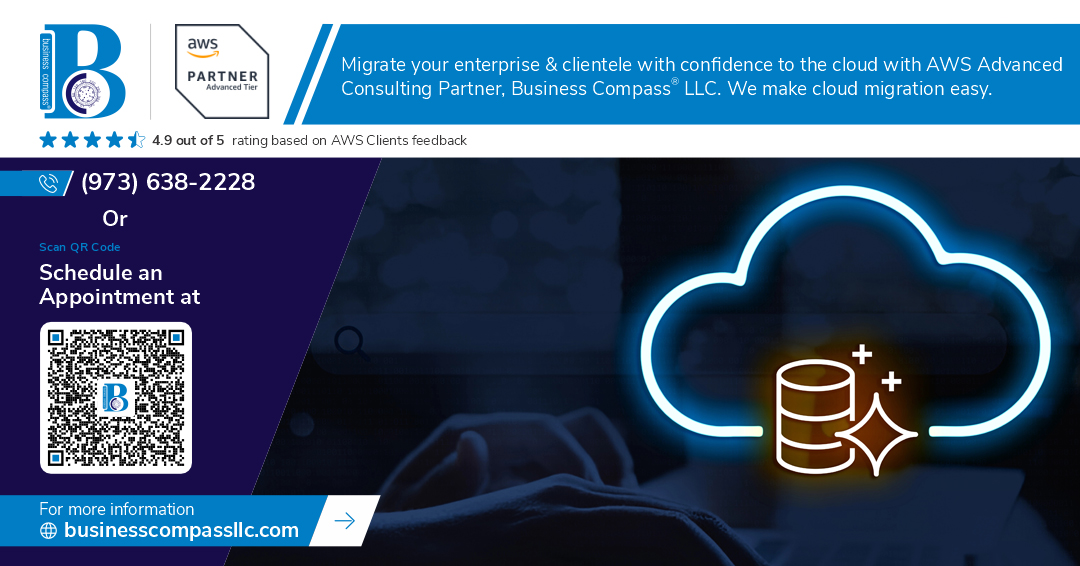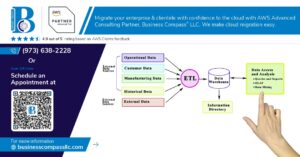In today’s data-driven world, speed is king. 🚀 Businesses and applications demand lightning-fast data processing and retrieval to stay competitive. Enter in-memory databases – the turbochargers of the database world. But with so many options available, how do you choose the right one for your needs?
Imagine having to sift through a sea of information, comparing features, performance metrics, and costs of various in-memory database systems. It’s enough to make your head spin! 💫 But fear not, as we’re about to embark on a journey to demystify the world of in-memory databases. We’ll explore the top contenders, dissect their strengths and weaknesses, and provide you with the knowledge you need to make an informed decision.
In this comprehensive guide, we’ll dive deep into understanding in-memory databases, compare popular systems, and analyze crucial factors such as performance, data models, consistency, integration capabilities, cost considerations, and security features. By the end, you’ll be equipped with the insights to choose the perfect in-memory database that will supercharge your data operations. Let’s get started!
Understanding In-Memory Databases
A. Definition and key features
In-memory databases (IMDBs) are data management systems that store and process data primarily in a computer’s main memory (RAM) rather than on disk. This approach offers significant performance advantages over traditional disk-based databases.
Key features of in-memory databases include:
- High-speed data access
- Real-time processing capabilities
- Reduced data latency
- Optimized data structures for memory storage
- Support for both structured and unstructured data
| Feature | Description |
|---|---|
| Data Persistence | Optional, often using snapshots or transaction logs |
| Scalability | Horizontal and vertical scaling options |
| Concurrency Control | Optimized for multi-core processors |
| Query Processing | In-memory algorithms for faster execution |
B. Advantages over traditional databases
In-memory databases offer several advantages over their traditional counterparts:
- Speed: IMDBs can process data orders of magnitude faster than disk-based systems.
- Simplified data models: No need for separate operational and analytical systems.
- Real-time analytics: Enables instant insights from large datasets.
- Reduced infrastructure costs: Less hardware required for comparable performance.
- Lower energy consumption: Fewer disk I/O operations lead to energy savings.
C. Common use cases
In-memory databases excel in scenarios requiring rapid data processing and analysis:
- Financial trading systems
- Real-time fraud detection
- IoT data processing
- E-commerce personalization
- Online gaming leaderboards
- Telecommunications network management
These use cases benefit from the low-latency, high-throughput capabilities of in-memory databases, enabling organizations to make split-second decisions based on real-time data analysis. As we explore popular in-memory database systems, we’ll see how these advantages translate into practical implementations across various industries.
Popular In-Memory Database Systems
Redis
Redis is a widely-used open-source in-memory data structure store. It supports various data structures and offers high performance, making it ideal for caching, real-time analytics, and session management.
Key features of Redis:
- Data structures: Strings, Lists, Sets, Sorted Sets, Hashes
- Pub/Sub messaging
- Lua scripting
- Transactions
- Persistence options
Memcached
Memcached is a distributed memory caching system designed to speed up dynamic web applications by alleviating database load. It’s simple, yet powerful and widely adopted.
Characteristics of Memcached:
- Key-value store
- Distributed architecture
- High performance
- Simplicity in design and usage
Apache Ignite
Apache Ignite is a distributed database for high-performance computing with in-memory speed. It offers a comprehensive set of features for data processing and storage.
| Feature | Description |
|---|---|
| Data Grid | Distributed key-value storage |
| Compute Grid | Distributed computations |
| Service Grid | Microservices deployment |
| Machine Learning | Distributed machine learning algorithms |
SAP HANA
SAP HANA is an in-memory, column-oriented, relational database management system developed by SAP SE. It’s designed for both transactional and analytical processing.
Key capabilities:
- Real-time analytics
- Multi-model data processing
- Advanced data compression
- Predictive analytics
Oracle TimesTen
Oracle TimesTen is an in-memory relational database designed for applications requiring real-time performance. It offers high throughput and low latency for mission-critical systems.
Notable features:
- SQL compatibility
- ACID compliance
- High availability options
- Integration with Oracle Database
Each of these in-memory database systems has its strengths and ideal use cases. The choice depends on specific application requirements, scalability needs, and integration with existing infrastructure. Next, we’ll examine how these systems compare in terms of performance metrics.
Performance Comparison
Read/write speeds
In-memory databases excel in read/write operations, significantly outperforming traditional disk-based systems. Here’s a comparison of average read/write speeds for popular in-memory databases:
| Database | Read Speed (ops/sec) | Write Speed (ops/sec) |
|---|---|---|
| Redis | 100,000+ | 80,000+ |
| Memcached | 500,000+ | 100,000+ |
| Apache Ignite | 150,000+ | 50,000+ |
These impressive speeds are achieved through:
- Direct memory access
- Optimized data structures
- Minimal I/O operations
Scalability
In-memory databases offer excellent scalability options:
- Vertical scaling: Increasing RAM on a single node
- Horizontal scaling: Adding more nodes to a cluster
- Data sharding: Distributing data across multiple nodes
Most in-memory databases support automatic sharding and rebalancing, ensuring seamless scalability as data volumes grow.
Data persistence options
While primarily memory-based, these databases often provide persistence mechanisms:
- Snapshots: Periodic full data dumps to disk
- Append-only files: Continuous logging of operations
- Replication: Maintaining copies on multiple nodes
These options help balance performance with data durability, allowing users to choose the right trade-off for their use case.
Memory usage efficiency
In-memory databases employ various techniques to maximize memory efficiency:
- Compression algorithms
- Intelligent data structures (e.g., bit arrays, hash tables)
- Expiration policies for unused data
These strategies help optimize memory usage, allowing more data to be stored in RAM and reducing overall infrastructure costs. Next, we’ll explore the different data models and structures used by in-memory databases.
Data Models and Structures
Key-value stores
Key-value stores are the simplest form of in-memory databases, offering high performance and scalability. They store data as key-value pairs, allowing for rapid retrieval and modification of information.
Key features of key-value stores:
- Fast read/write operations
- Horizontal scalability
- Simple data model
- Ideal for caching and session management
Popular key-value store examples:
- Redis
- Memcached
- Apache Ignite
| Aspect | Key-value stores | Traditional databases |
|---|---|---|
| Data model | Simple key-value pairs | Complex relational structures |
| Query flexibility | Limited | Extensive |
| Performance | Extremely fast | Varies |
| Scalability | Highly scalable | Can be challenging |
In-memory tables
In-memory tables store data in a tabular format entirely in RAM, providing lightning-fast access and processing capabilities. They combine the speed of in-memory storage with the structure of traditional relational databases.
Key advantages of in-memory tables:
- Accelerated query performance
- Real-time analytics
- Reduced disk I/O
- Support for complex data operations
Distributed caches
Distributed caches spread data across multiple nodes in a cluster, offering high availability and fault tolerance. They are crucial for scaling applications and improving performance in distributed systems.
Benefits of distributed caches:
- Improved application responsiveness
- Load balancing
- Fault tolerance
- Support for data partitioning
Graph databases
Graph databases excel at managing highly interconnected data, making them ideal for social networks, recommendation engines, and fraud detection systems. They store data in nodes and edges, representing entities and relationships, respectively.
Key features of graph databases:
- Efficient traversal of relationships
- Natural representation of complex networks
- Powerful query capabilities
- Flexibility in data modeling
Now that we’ve explored various data models and structures in in-memory databases, let’s move on to examining their consistency and reliability features.
Consistency and Reliability
Data replication methods
In-memory databases employ various replication methods to ensure data consistency and reliability across distributed systems. Here are some common approaches:
- Synchronous replication
- Asynchronous replication
- Multi-master replication
- Chain replication
| Replication Method | Description | Pros | Cons |
|---|---|---|---|
| Synchronous | Data is written to all replicas before confirming write | Strong consistency | Higher latency |
| Asynchronous | Primary node confirms write, then replicates to others | Lower latency | Potential data loss |
| Multi-master | Multiple nodes can accept writes | High availability | Complex conflict resolution |
| Chain | Data is replicated through a chain of nodes | Scalable | Vulnerable to node failures |
Backup and recovery options
In-memory databases offer various backup and recovery options to protect against data loss:
- Snapshot backups
- Incremental backups
- Point-in-time recovery
- Hot backups
Fault tolerance mechanisms
To ensure high availability and reliability, in-memory databases implement several fault tolerance mechanisms:
- Automatic failover
- Cluster sharding
- Quorum-based consensus
- Write-ahead logging (WAL)
These mechanisms work together to maintain data integrity and system availability in the face of hardware failures, network issues, or other unexpected events. By implementing a combination of replication methods, backup strategies, and fault tolerance mechanisms, in-memory databases can provide robust consistency and reliability for critical applications.
Integration and Ecosystem
Programming language support
In-memory databases offer diverse programming language support, catering to different development needs. Here’s a comparison of language support across popular in-memory databases:
| Database | Java | Python | C/C++ | Node.js | .NET |
|---|---|---|---|---|---|
| Redis | ✓ | ✓ | ✓ | ✓ | ✓ |
| Memcached | ✓ | ✓ | ✓ | ✓ | ✓ |
| Apache Ignite | ✓ | ✓ | ✓ | ✓ | ✓ |
| SAP HANA | ✓ | ✓ | ✓ | ✓ | ✓ |
Most in-memory databases provide robust support for popular programming languages, ensuring developers can easily integrate them into their existing tech stacks.
Cloud platform availability
In-memory databases are increasingly available on major cloud platforms, offering scalability and ease of deployment. Common cloud offerings include:
- Amazon ElastiCache (for Redis and Memcached)
- Azure Cache for Redis
- Google Cloud Memorystore
- IBM Cloud Databases for Redis
These cloud-based solutions provide managed services, reducing operational overhead and allowing developers to focus on application logic rather than infrastructure management.
Third-party tool compatibility
In-memory databases often integrate well with various third-party tools, enhancing their functionality and ease of use. Some popular integrations include:
- Monitoring tools: Prometheus, Grafana, New Relic
- Data visualization: Tableau, Power BI
- ETL tools: Apache Nifi, Talend
- Caching layers: Varnish, Nginx
These integrations enable developers to build robust, scalable systems that leverage the speed of in-memory databases while benefiting from a rich ecosystem of supporting tools.
Now that we’ve explored the integration capabilities and ecosystem support of in-memory databases, let’s examine the cost considerations associated with implementing and maintaining these powerful data storage solutions.
Cost Considerations
Licensing models
When comparing in-memory databases, licensing models play a crucial role in determining overall costs. Different vendors offer various licensing options:
- Open-source: Free to use but may lack enterprise-grade features
- Subscription-based: Regular payments for access and support
- Perpetual licensing: One-time purchase with optional support contracts
- Usage-based: Pay for actual resource consumption
| License Type | Pros | Cons |
|---|---|---|
| Open-source | Cost-effective, community support | Limited features, no official support |
| Subscription | Regular updates, official support | Ongoing costs, potential vendor lock-in |
| Perpetual | One-time cost, predictable expenses | High upfront investment, potential obsolescence |
| Usage-based | Pay for what you use, scalable | Costs may fluctuate, challenging to budget |
Hardware requirements
In-memory databases demand specific hardware configurations to optimize performance:
- High-capacity RAM: Essential for storing data in memory
- Fast CPUs: Necessary for rapid data processing
- Solid-state drives (SSDs): For persistence and data recovery
Operational expenses
Beyond licensing and hardware, consider these ongoing operational costs:
- Maintenance and support fees
- Training for database administrators
- Power consumption for high-performance hardware
- Backup and disaster recovery solutions
- Scaling costs for growing data volumes
Carefully evaluating these cost considerations will help organizations choose the most suitable in-memory database solution that balances performance and budget constraints. Next, we’ll explore the critical security features that protect valuable data stored in these high-speed database systems.
Security Features
Authentication and authorization
In-memory databases require robust security measures to protect sensitive data. Authentication and authorization form the first line of defense:
- Authentication: Verifies user identity
- Authorization: Determines user access rights
| Feature | Description |
|---|---|
| Multi-factor authentication | Enhances security by requiring multiple forms of verification |
| Role-based access control | Assigns permissions based on user roles |
| LDAP/AD integration | Allows for centralized user management |
Implementing strong authentication and authorization policies is crucial for maintaining data integrity and preventing unauthorized access.
Encryption capabilities
Encryption is vital for protecting data at rest and in transit. In-memory databases offer various encryption methods:
- Data-at-rest encryption
- Transport Layer Security (TLS) for data in transit
- Client-side encryption
Many in-memory databases support industry-standard encryption algorithms like AES-256, ensuring data remains secure even if physical access to the server is compromised.
Audit logging
Audit logging is essential for monitoring database activities and maintaining compliance:
- Tracks user actions and system events
- Helps detect suspicious activities
- Supports forensic analysis in case of security breaches
Effective audit logging should capture:
- User logins/logouts
- Data modifications
- Configuration changes
- Access attempts (successful and failed)
Implementing comprehensive security features is crucial for protecting sensitive data in in-memory databases. Next, we’ll explore the cost considerations associated with deploying and maintaining these powerful database systems.
In-memory databases offer significant performance advantages over traditional disk-based systems, making them a crucial component in modern data-driven applications. As we’ve explored, popular options like Redis, Memcached, and Apache Ignite each have their unique strengths and trade-offs in terms of performance, data models, consistency, and ecosystem integration. The choice of an in-memory database depends on specific use cases, scalability requirements, and budget constraints.
When selecting an in-memory database for your project, carefully consider factors such as data persistence needs, query complexity, and integration with existing infrastructure. Evaluate the security features offered by each solution to ensure your data remains protected. Ultimately, the right in-memory database can dramatically improve application performance and user experience, giving your organization a competitive edge in today’s fast-paced digital landscape.




















